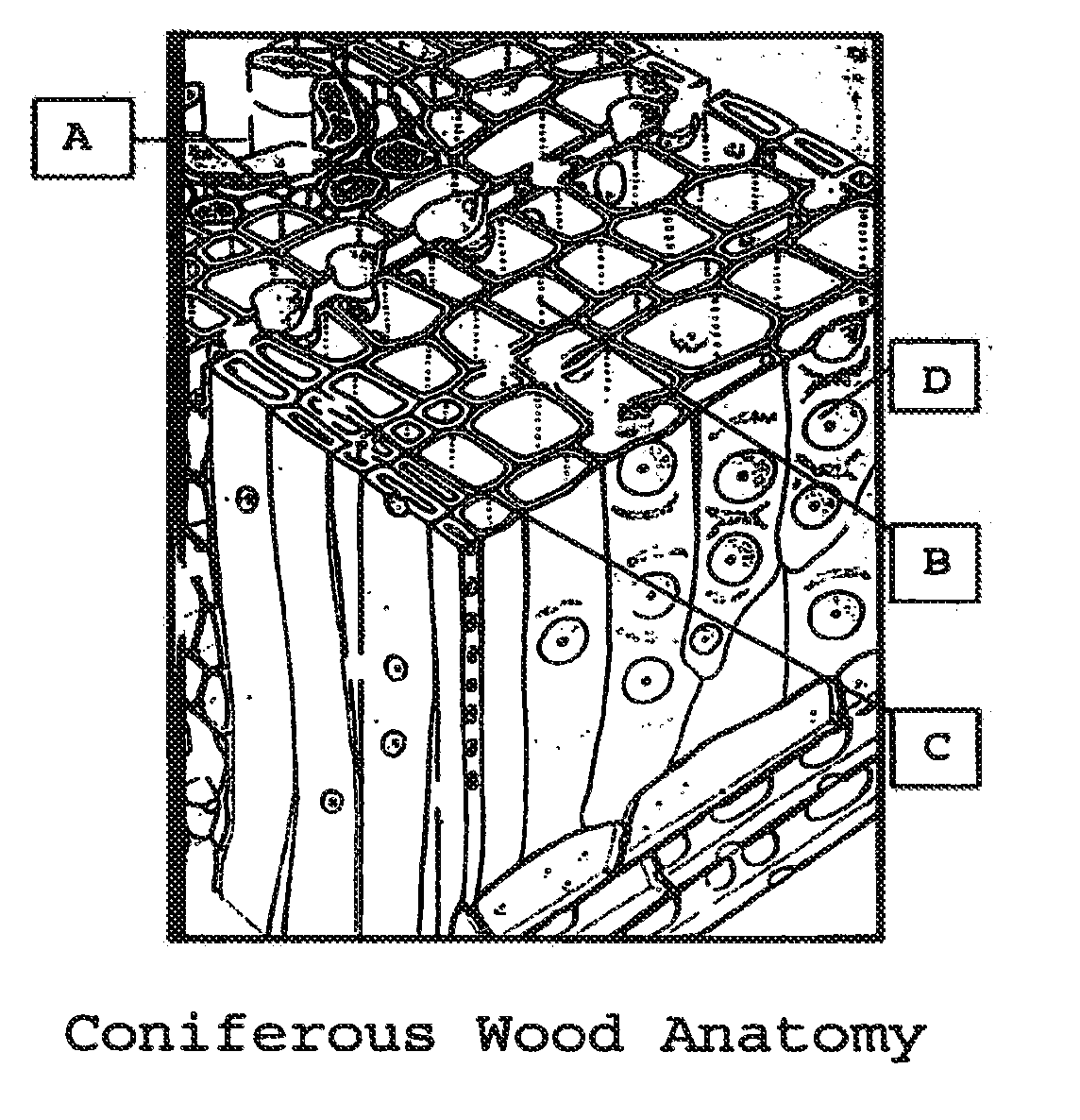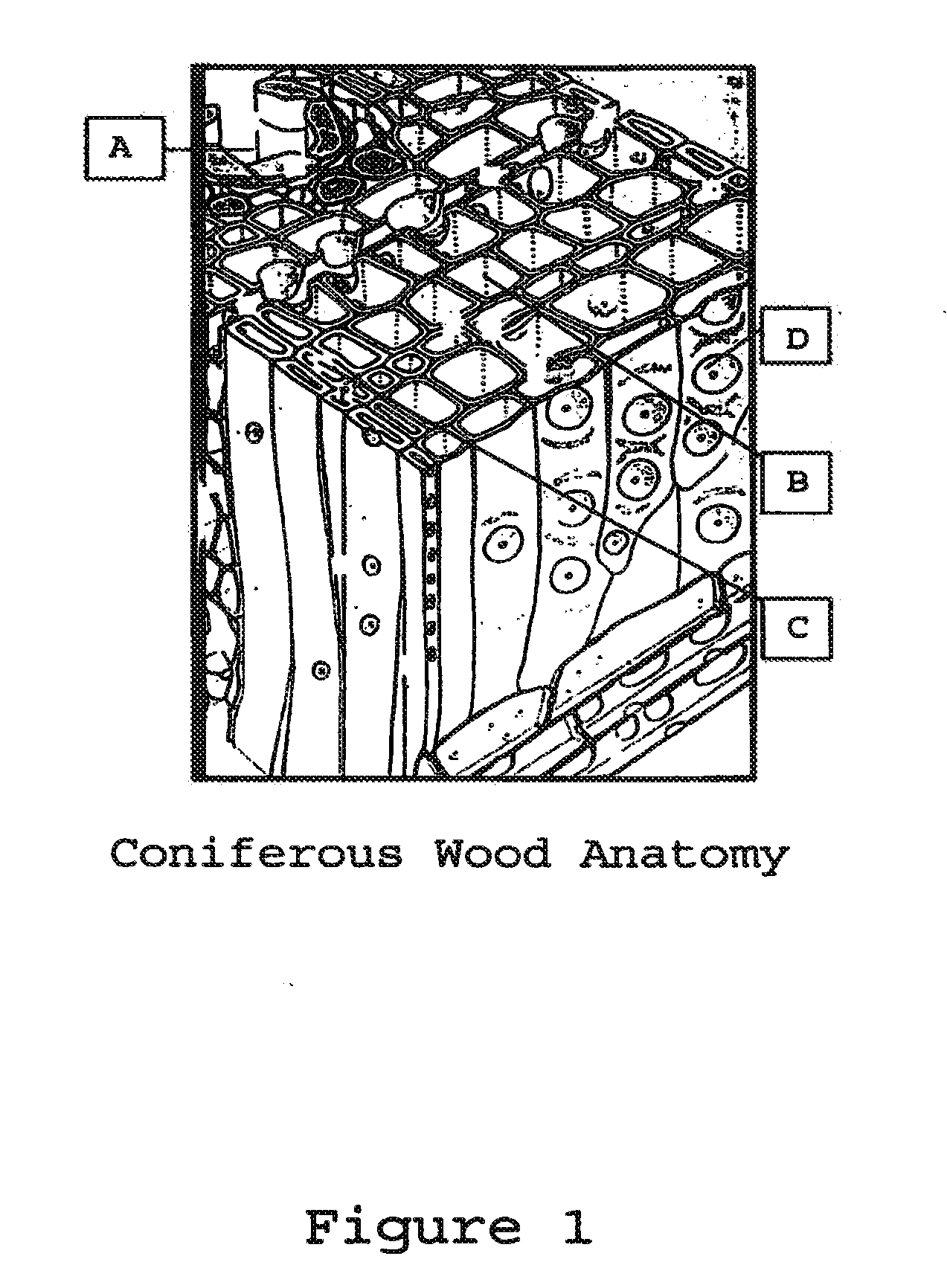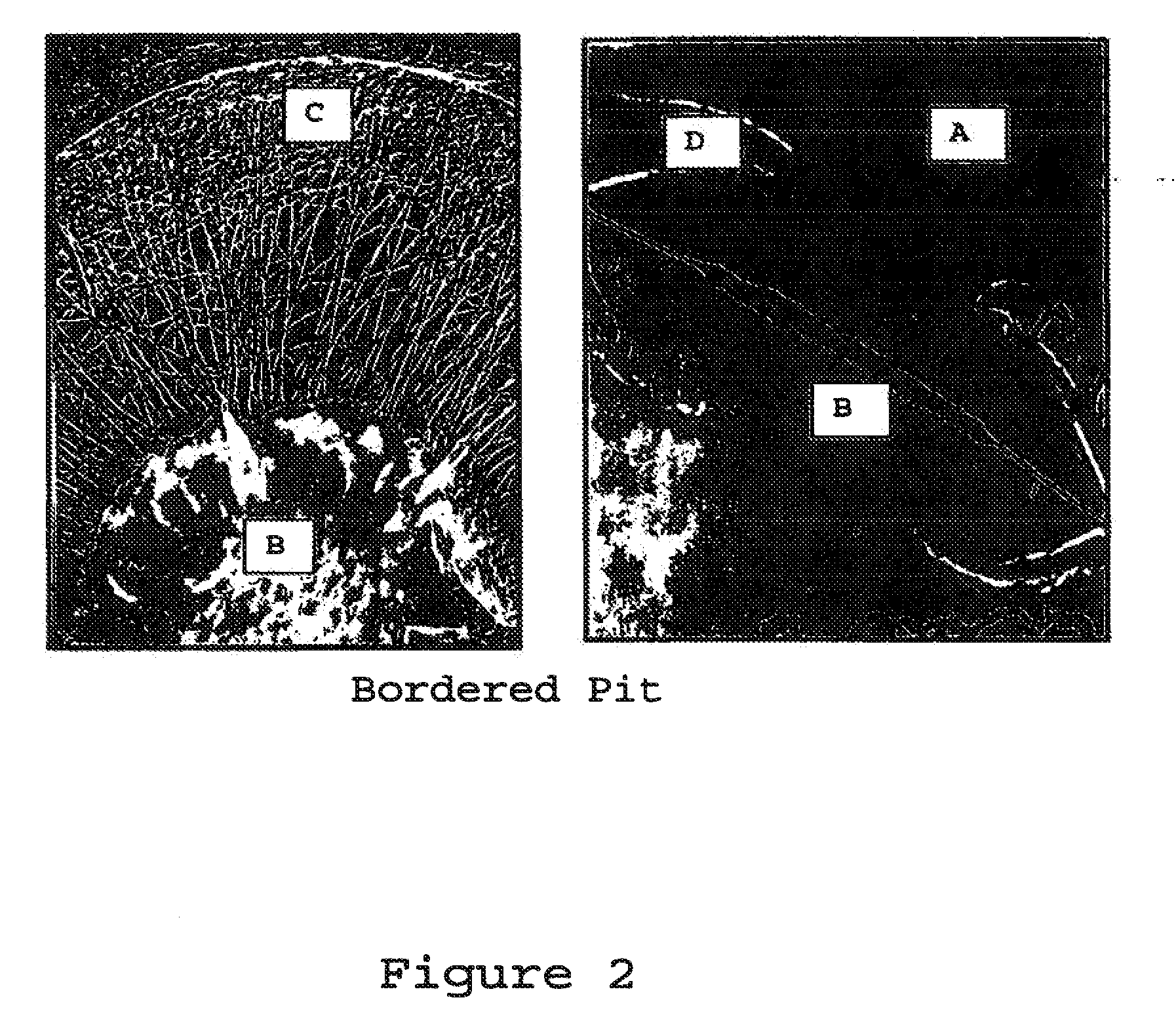Compositions and methods for treating cellulose-based materials with micronized additives
a technology of additives and cellulose, applied in the direction of cellulosic plastic layered products, lighting and heating apparatus, paints with biocides, etc., can solve the problems of environmental damage, leaching additives, residue bleeding, etc., and achieve the effects of reducing cost, reducing cost, and reducing cos
- Summary
- Abstract
- Description
- Claims
- Application Information
AI Technical Summary
Benefits of technology
Problems solved by technology
Method used
Image
Examples
example 1
[0043]Six hundred grams of red iron oxide, 400 g yellow iron oxide and 10 g carbon black are added to a container containing 2850.0 g of water and 150 g of a commercially available dispersant. The mixture is mechanically stirred for about 20 minutes and then added to a grinding mill. The sample is ground for about 1 hour and a stable dispersion is obtained. The particle size of the dispersed product can be analyzed by Horiba LA-910 Particle Size Distribution Analyzer (PSDA). The average particle size is preferably 0.3 microns with a distribution range of 0.04 um to 1.5 um.
[0044]The resulting brown iron oxide dispersion can be diluted with water to make a treating fluid containing 1.0% iron oxide. The treating fluid can be used to treat southern pine samples using a full cell process. The treated samples can be oven dried and tested to check uniform distribution of iron oxide throughout the cross sections and for the presence of a uniform brown color.
example 2
[0045]Nine hundred grams of red iron oxide and 100 g yellow iron oxide are added to a container containing 1550 g of water and 150 g of a commercially available dispersant. The mixture is mechanically stirred for about 20 minutes and then added to a grinding mill. The sample is ground for about 1 hour and a stable dispersion is obtained. The particle size of the dispersed product can be analyzed by Horiba LA-910 Particle Size Distribution Analyzer (PSDA). The average particle size is preferably 0.3 microns with a distribution range of 0.005 um to 1.5 um.
[0046]The resulting dispersion can be diluted with water to make a treating fluid containing 0.5% total iron oxides. The treating fluid can be used to treat southern pine samples using a full cell process. The treated samples can be oven dried and tested to check uniform distribution of iron oxide throughout the cross sections and for the presence of a uniform color.
example 3
[0047]Seven hundred grams of red iron oxide, 200 g yellow iron oxide and 5 g black iron oxide are added to a container containing 2050 g of water and 180 g of a commercially available dispersant. The mixture is mechanically stirred for about 20 minutes and then added to a grinding mill. The sample is ground for about 1 hour and a stable dispersion is obtained. The particle size of the dispersed product can be analyzed by Horiba LA-910 Particle Size Distribution Analyzer (PSDA). The average particle size is preferably 0.35 microns with a distribution range of 0.005 um to 2.0 um.
[0048]The resulting dispersion can be diluted with water to make a treating fluid containing 0.5% total iron oxides. The treating fluid can be used to treat southern pine samples using a full cell process. The treated samples can be oven dried and tested to check uniform distribution of iron oxide throughout the cross sections and for the presence of a uniform color.
PUM
| Property | Measurement | Unit |
|---|---|---|
| diameters | aaaaa | aaaaa |
| diameter | aaaaa | aaaaa |
| diameter | aaaaa | aaaaa |
Abstract
Description
Claims
Application Information
 Login to View More
Login to View More - R&D
- Intellectual Property
- Life Sciences
- Materials
- Tech Scout
- Unparalleled Data Quality
- Higher Quality Content
- 60% Fewer Hallucinations
Browse by: Latest US Patents, China's latest patents, Technical Efficacy Thesaurus, Application Domain, Technology Topic, Popular Technical Reports.
© 2025 PatSnap. All rights reserved.Legal|Privacy policy|Modern Slavery Act Transparency Statement|Sitemap|About US| Contact US: help@patsnap.com



